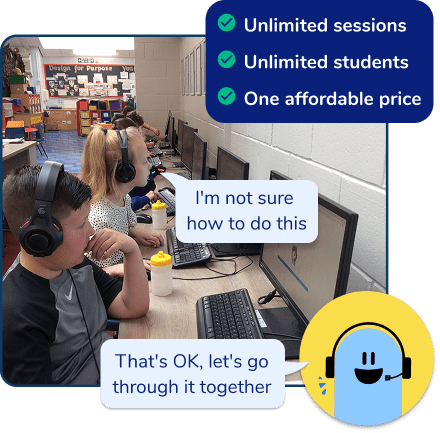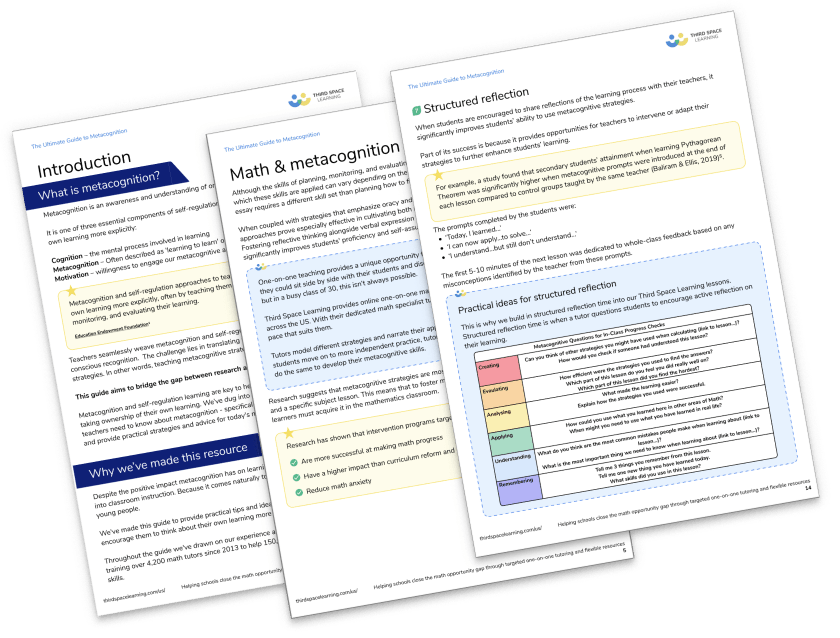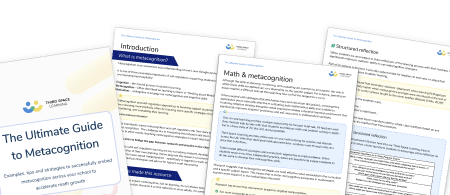5 Tried And Tested Strategies To Increase Student Engagement At School
Since the pandemic, student engagement rates have steadily decreased. This can have long-term adverse effects on a student’s overall educational experience and success so we need to address it now.
When students are actively involved, interested, and motivated, they are more likely to learn, retain information, and develop a lifelong love of learning. But, studies have found that the 74% of students reporting high engagement in 5th grade drops to less than one-third by high school.
This article explores the importance of student engagement, looks at different types of engagement and discusses strategies for enhancing and increasing engagement.
What is student engagement?
Student engagement is the degree to which students are interested, interacting, and curious about learning. Picture a classroom filled with students interested in what their teacher is saying, engaged with the material, and eager to problem solve, this is student engagement.
While student engagement falls heavily on the shoulders of teachers and classroom faculty, school leaders help set the tone and standard for student learning. All faculty and staff must commit to increasing student engagement to achieve maximum student success.
Student engagement is not a single dimension issue, there are three strands of engagement involved in students’ academic journeys and success:
- Cognitive environment engagement;
- Behavioural environment engagement;
- Emotional environment engagement.
The Ultimate Guide To Metacognition
A guide summarizing the key information school leaders and teachers need to know about metacognition, specifically in regards to math teaching and learning. Includes practical tips and ideas to use with students to encourage them to think about their own learning more explicitly.
Download Free Now!Cognitive environment engagement
Cognitive engagement refers to a student’s psychological investment in their learning, or willingness to learn the material presented. The environment a learner is in plays a major role in their ability and willingness to learn.
Cognitive environment engagement refers to the intellectual stimulation and challenge students experience in the classroom. Many factors contribute to cognitive environment engagement, including:
- Intellectual rigor: The cognitive demand required for students to complete tasks and assignments
- Relevance: Connection between the curriculum and students’ real-world experiences.
- Feedback: The quality and frequency of feedback students receive on their work.
- Differentiation: Provision of instruction tailored to students’ individual needs and learning styles.
Cognitively engaged students become actively involved in the learning process, seeking to understand and apply new knowledge. However, because students are cognitively challenged by material does not mean they are cognitively engaged.
Cognitive engagement comes into play when students are given opportunities to apply their knowledge to real-world problems and think critically about mathematical concepts.
What cognitive environment engagement looks like
When teaching fractions, rather than drilling fraction problems, a teacher may present students with a real-life application of fractions such as pizza slices. The teacher explains to the class that a pizza is cut into eight slices. They then ask the students how many slices would be left if \frac{3}{4} of the pizza is eaten.
For group or independent work, the teacher may ask students to think of other real-world objects that relate to fractions and create their own word problem. This provides students with real-world situations and a cognitive challenge.

Behavioral environment engagement
When you see students actively participate in an assignment or activity, they are more likely to be behaviorally engaged.
Behavioral environment engagement relates to the physical and organizational aspects of the classroom that can impact student engagement. Behaviorally engaged students are:
- Attentive;
- Participate in class discussions;
- Complete assignments with enthusiasm.
Creating a behavioural engagement in a classroom environment requires heavy organization and structure on the teacher’s part. This includes establishing and maintaining:
- Classroom layout: The arrangement of desks and furniture influences student interaction and collaboration.
- Classroom management: Consistent and effective teaching strategies to maintain order and discipline.
- Routines and procedures: Clear and consistent routines and procedures that create a predictable and organized learning environment.
What behavioral environment engagement looks like
In a third-grade math class, the teacher arranges desks into small groups to encourage peer interaction and collaboration. Each group receives a set of manipulatives such as counters or fraction tiles to solve a word problem involving fractions.
As students begin the activity, they are attentive and focused, discussing strategies and exchanging ideas with their peers. The teacher has established clear routines and expectations, such as using “inside voices” during group discussions and raising hands when they need help.
This organized environment allows students to stay behaviorally engaged and attentive. They participate fully in discussions, and complete the task with a positive, focused attitude.

Meet Skye, the voice-based AI tutor making math success possible for every student.
Built by teachers and math experts, Skye uses the same pedagogy, curriculum and lesson structure as our traditional tutoring.
But, with more flexibility and a low cost, schools can scale online math tutoring to support every student who needs it.
Find out moreEmotional environment engagement
Emotional, or affective, environment engagement refers to the emotional climate of the classroom and students’ feelings about their learning experience. Emotionally engaged students feel connected to the learning process and find it meaningful and rewarding.
There are many components to emotional environment engagement, including:
- Relationships: The quality of relationships among students and between students and teachers.
- Sense of belonging: Students need to feel accepted and valued in the classroom community. This also pertains to the overall school climate.
- Motivation: Students’ intrinsic motivation to learn and achieve.
- Positive reinforcement: Praise and rewards to encourage positive behavior and effort.
What emotional environment engagement looks like
In a fourth-grade math class, the teacher starts with a quick warm-up question, encouraging students to share different strategies for solving a problem. Each student is given time to explain their approach. The teacher actively listens and provides positive feedback, such as, “I like how you broke down the problem, that’s really creative!” or “That’s a fantastic way to think about it!”
Why does student engagement matter?
Student engagement has a snowball effect on student performance. When students become engaged, they are more likely to achieve higher academic outcomes, including higher performance on tests, assignments, and standardized assessments.
In turn, this helps students develop a positive attitude towards learning, and they are more likely to view learning as valuable and enjoyable.
This new mindset forms students engaged in their education and more likely to continue learning throughout their lives, regardless of choosing a college or career path upon graduating high school.
In fact, a 2018 Gallup study found 94% of educators considered student engagement the most important metric of student success.
Measuring and assessing student engagement
Regularly assessing and progress monitoring student engagement allows teachers to identify areas for improvement and adjust their instructional strategies accordingly. Various tools and methods help assess student engagement in the classroom, each involves teachers interacting with the students.
These types of assessments can be conducted in a variety of ways, including:
- Observations: Teachers can observe students’ behavior during class activities to gauge their level of engagement and compare it with class performance.
- Surveys and questionnaires: Students can provide feedback on their engagement levels through surveys or questionnaires.
- Informal assessments: Class discussions and group work can informally assess students’ understanding and participation.
5 Strategies to increase student engagement
Active learning consequently increases student engagement. Opportunities for active learning enhance the educational experience for students and provide meaningful learning activities.
Here are some popular active learning strategies used to increase student engagement.
1. Interactive learning and questioning
Interactive learning and effective questioning strategies are essential tools for fostering critical thinking and active participation in the classroom. By engaging students in meaningful discussions, problem-solving activities, and thought-provoking questions, educators can help students:
- Develop their analytical skills;
- Evaluate information critically;
- Express their ideas confidently.
These strategies also create a more dynamic and engaging learning environment where students feel empowered to contribute their unique perspectives.
Common examples of interactive learning and questioning include:
- Asking open-ended questions;
- Using think-pair-share activities;
- Creating interactive games and simulations.

In an elementary school math class, a teacher could ask students to work in pairs to solve a word problem. After identifying a solution, the group could present their findings to the class and explain their reasoning.
2. Use of technology
From interactive simulations and virtual field trips to personalized learning tools, technology offers a variety of opportunities for students from elementary to higher education to explore, create, and connect with the world around them.
Effectively leveraging these digital resources, educators can foster a more dynamic, inclusive, and effective learning environment.
Common uses of technology in the classroom include:
- Integrating technology such as interactive whiteboards into lessons;
- Creating multimedia presentations.
In a middle school math class, a teacher could ask students to complete a task on their graphing calculators and ask for a volunteer to draw the result on an interactive whiteboard for a class discussion.
Third Space Learning uses technology during our one-on-one AI math tutoring sessions to increase student engagement. Lessons take place in an interactive classroom and in addition to talking to the AI tutor, students use the interactive classroom tools to communicate their mathematical ideas and critical thinking.

3. Real-world applications and meaningful work
Creating learning experiences that apply to students’ lives outside of the classroom helps students see the long lasting impact of what they are learning while making the work more meaningful. Often, these go hand-in-hand and provide additional levels of student autonomy.
Educators could include real-world applications to class by:
- Connecting learning to real-life experiences such as current events in their town or upcoming milestones;
- Using authentic formative and summative assessments such as asking students to apply their knowledge of money to a real-world situation to assess students’ understanding of concepts in real-world scenarios;
- Allow students to choose their projects or topics within a given framework.
In a high school senior math class, a teacher could give students the choice to either calculate the cost of a trip to visit a college or create a hypothetical budget of monthly living expenses. This creates a student-centered learning experience that directly relates to student decision-making experiences post-graduation.
4. Nurture relationships
Developing and nurturing student relationships is a powerful tool in a teacher’s toolbelt. Getting to know students as individuals and creating a supportive and welcoming classroom environment lowers their affective filter and encourages them to be open to learning. Students who feel that their teachers support them are 1.6 times more likely to be engaged in school-particularly in middle and high school.
It is also important to nurture relationships among peers. Having students work together on projects and assignments, through virtual or in-person interactions, is an easy way to incorporate nurturing relationships into the curriculum.
5. Self-efficacy
Meeting students where they are in their learning and building them up is key to helping them develop self-efficacy. Students who believe in their own abilities are the ones who can perform their best.
While self-efficacy relies mostly on the student’s beliefs, teachers and school leaders can help facilitate and increase it by providing students with positive feedback and encouragement.
This feedback must be genuine. When students reach a difficult point, rather than falsely building them up, help them set achievable goals. Break down complex, or daunting tasks into smaller, manageable steps. For example, mapping out the steps to complete a unit project rather than trying to meet one final deadline.
At Third Space Learning, Skye, the AI maths tutor, delivers the one-on-one AI math tutoring lessons, adapting and tailoring them to meet the needs of each student. All students learn at the appropriate pitch and pace to help encourage and nurture their engagement with the lesson.
Throughout each session, Skye provides highly helpful feedback to students, encouraging them to persevere or working through problems when misconceptions and errors arise.

Challenges and solutions in promoting student engagement
Educators encounter challenges in promoting student engagement, primarily a lack of resources. Limited access to technology, materials, or even quality professional development opportunities can hinder an educator’s ability to promote student engagement.
Additionally, schools with a high percentage of chronic absenteeism and large class sizes face higher obstacles. It’s difficult to engage students in a large class setting compared to small-groups.
To overcome these challenges, schools need to be creative. If access to resources is an issue, evaluate the resources available and how they are being used. Then consider contacting community partners and organizations that provide schools grants and funding.
Evaluate your school and classroom culture. Ask yourself if the environment fosters a sense of belonging and acceptance for all students. If the answer is no, work with school leaders and colleagues to see how you can work as a team to create a supportive and inclusive classroom environment.
The lasting impact of student engagement
Student engagement is the foundation of student success and will help close the achievement gap. For students to be fully engaged in their coursework, they have to find meaning and purpose in the content they are learning.
Students who do so can make lifelong connections to their content, apply their learning to everyday life, and further their success.
This enhanced understanding improves higher academic outcomes, increased self-efficacy, and overall student success.
READ MORE: 13 Effective Test Taking Strategies
FAQs
Student engagement refers to how involved, interactive, and curious students are in the classroom.
There are many “C’s” used in student engagement. These include:
Control: Students need to feel some sense of autonomy in their education to be fully engaged.
Complexity: Appropriately challenged students are more willing to engage.
Common bonds: Students need to feel connected with their classroom community and the material.
Choice: When appropriate, students should have a choice in their learning opportunities. For example, students could choose their final project.
Caring teachers: Students who have invested teachers are more willing to find meaning and importance in their education.
The 4 C’s of student engagement help educators keep engagement strategies at the forefront.
Connections: Students who feel connected to their classroom community are more willing to engage with their peers, content, and teachers.
Conditions: Students who feel safe and secure in their classroom are shown to have higher levels of engagement.
Challenge: Appropriately challenged students demonstrate higher levels of cognitive engagement.
Control: The more students feel a sense of autonomy over their learning the more engaged they are willing to be.
Do you have students who need extra support in math?
Skye—our AI math tutor built by experienced teachers—provides students with personalized one-on-one, spoken instruction that helps them master concepts, close skill gaps, and gain confidence.
Since 2013, we’ve delivered over 2 million hours of math lessons to more than 170,000 students, guiding them toward higher math achievement.
Discover how our AI math tutoring can boost student success, or see how our math programs can support your school’s goals:
– 3rd grade tutoring
– 4th grade tutoring
– 5th grade tutoring
– 6th grade tutoring
– 7th grade tutoring
– 8th grade tutoring







